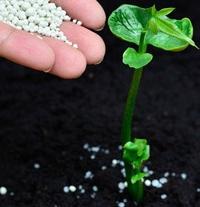Clematis will not leave anyone indifferent. Gorgeous flowers of various shapes and colors bloom on their graceful legs from early June to the coldest. Depending on the variety, they can grow in a compact bush or spread out in a vine with a length of up to 10 meters.
These climbing plants of the buttercup family come from the sultry of Spain, so some gardeners fear that caring for them will be very difficult. Cultivation has its own characteristics, the most important of which are a good choice of place, timely top dressing of clematis, proper pruning.
Fertilizing when planting
Clematis in one place can grow more than 30 years, so the land must be prepared carefully before planting. The planting pit must be filled with humus (2 buckets), add 1 bucket of sand and peat, 0.5 l of wood ash, 100 g of superphosphate and complex mineral fertilizer. Clematis love alkaline and neutral soil, so when planting it is advisable to add a handful of dolomite flour. Using fresh manure and acid peat can destroy clematis.
Top dressing in the first year after spring planting is not carried out. In the future, the amount of nutrients in the soil decreases, and the plant needs fertilizers.
Alternating feed for plentiful flowering
The first top dressing of clematis is carried out in May after the shoots regrowth. The second - during the budding period. Feeding clematis in the spring stimulates their growth and development. At this time, the plant is in dire need of nitrogen. For this, any complex fertilizer with a high nitrogen content is suitable (marked on the packaging with the letter N). Further, the soil under the plant is shed with milk of lime and mulched. In order to obtain strong, plentifully flowering clematis, top dressing should be carried out during the entire growing season of the plant, approximately 2 times a month.
During the summer, mineral fertilizing alternates with organic. For mineral top dressing, a matchbox of complex fertilizer is used on a bucket of water. For organic - infusion of herbs (1-2 l), bird droppings (1:15), or fermented slurry (1:10).

Since August, nitrate fertilizers have not been used; phosphorus takes their place. Its lack can cause brown leaves, inhibition of the growth of roots and shoots. If in spring potassium nitrate or ammonium nitrate was used for top dressing , then in the second half of summer it is necessary to replace it with potassium sulfate. The shoots must fully mature so that by winter the gardener gets a strong clematis ready for wintering. Feeding with phosphorus in September is carried out at the main dressing in the form of bone meal, simple or double superphosphate. However, excessive phosphorus in the soil can cause premature aging of the plant and provoke the incidence of chlorosis. To neutralize the action of phosphates, iron sulfate is introduced into the soil once every 2 weeks.
The key to success is good soil
On well-aerated cultivated lands , the clematis root system extends up to 1 m wide from the base of the bush and up to 80 cm deep, which allows the plant to select minerals and trace elements that are missing for life from the soil.
Properly planted clematis, which is fed correctly and fully, is always blooming and tolerates winter well.